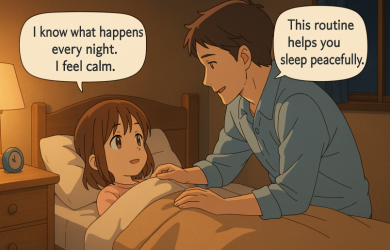7 Signs of Attachment Disturbance & Ways to Prevent It

Unlock Daily 30-Sec Tips for a Happier Relationship
👉 Subscribe FREEKey Takeaways
Marriage.com AI Quick Summary
Did you know that nearly 50% of people experience some form of attachment disturbance in their relationships? This surprising fact highlights a common problem that many overlook.
Attachment problems can quietly cause misunderstandings, emotional distance, and long-term issues between partners.
It’s essential to notice the signs of attachment disturbances to keep relationships healthy and happy. These signs, like inconsistent communication and emotional unavailability, can affect the balance of a relationship. By understanding these signs, couples can prevent problems and build a stronger, more loving connection.
What is the significance of attachment in relationships?
Attachment is significant in relationships because it forms the emotional bond between partners, influencing how they interact, communicate, and support each other. A secure attachment can promote trust, intimacy, and mutual respect, creating a stable foundation for the relationship.
Conversely, attachment issues can lead to misunderstandings, emotional distance, and conflicts. Understanding and nurturing healthy attachment may help partners feel safe and valued, enhancing their relationship’s overall quality and longevity.
Research has demonstrated how secure attachment bonds contribute to healthier and more satisfying relationships. A study found that couples participating in EFT significantly improved their relationship satisfaction and emotional connection.
What defines an attachment disturbance?
An attachment disturbance occurs when there are disruptions in the emotional bond between individuals, often stemming from inconsistent or inadequate caregiving during childhood. This can lead to difficulties in forming and maintaining healthy relationships in adulthood.
For example, someone with an attachment disturbance might struggle with trust, display clinginess, or withdraw emotionally from romantic relationships. They may fear abandonment or have difficulty expressing their needs and emotions, resulting in misunderstandings and conflicts.
Grady Shumway, LMHC, explains,
Attachment disturbances can manifest in various ways, including fear of intimacy, difficulty depending on others, or a pattern of pushing people away despite desiring closeness. Healing from an attachment disturbance often involves building trust, working through past trauma, and developing healthier relational patterns.
7 signs of attachment disturbance in a relationship
Attachment disturbance in relationships can manifest in various ways, affecting the emotional bond between partners. Recognizing the signs of attachment disturbance is crucial to address these issues and maintain a healthy relationship. Here are 7 key signs to look out for:
1. Inconsistent communication
Inconsistent communication is a common sign of attachment disturbance in relationships. One partner may frequently withdraw or become unresponsive, leaving the other feeling neglected and uncertain. This inconsistency can create a sense of instability, making it hard to build trust and mutual understanding.
Studies show that wives experience lower relationship satisfaction with high negative communication, while the satisfaction of husbands drops only when negative communication and stress levels are both high.
2. Fear of intimacy
An intense fear of intimacy often indicates relationship attachment issues. This can lead to avoiding deep emotional connections or shying away from vulnerability. Partners may struggle to open up or express their feelings, resulting in a superficial relationship lacking emotional depth.
3. Clinginess or dependency
Clinginess or excessive dependency is another sign of attachment disturbance. One partner might constantly seek reassurance and feel insecure without the other’s presence. This behavior can be overwhelming and lead to a sense of suffocation, making the relationship feel unbalanced.
4. Difficulty trusting others
Difficulty trusting others is a significant indicator of attachment issues. A partner may be overly suspicious or have trouble believing in the other’s loyalty and intentions. This lack of trust can cause ongoing conflicts and prevent the development of a secure, loving bond.
Grady Shumway, LMHC, states,
The mistrust often stems from past experiences of betrayal or neglect, making it difficult to fully open up or rely on others. Overcoming this challenge requires patience, consistent reassurance, and gradually building a foundation of trust through open communication and positive experiences.
5. Emotional volatility
Emotional volatility is a clear sign of attachment disturbance in relationships. Partners may experience frequent mood swings, intense reactions, or unpredictable behavior. This emotional instability can lead to misunderstandings and create a tense, uneasy atmosphere in the relationship.
6. Fear of abandonment
A profound fear of abandonment often accompanies attachment disturbances. One partner might constantly worry about being left or rejected, leading to clingy behavior or attempts to control the other. This fear can cause stress and prevent the relationship from evolving naturally.
7. Avoidance of conflict
Avoiding conflict is another sign of relationship attachment issues. Partners might be reluctant to address problems or discuss their feelings to prevent disagreements. This avoidance can lead to unresolved issues, resentment, and a lack of genuine communication and problem-solving.
5 impacts of attachment disturbance on relationships
Attachment disturbance in relationships can significantly impact both partners’ emotional and psychological well-being.
These issues often stem from unresolved attachment wounds and can manifest in various ways, creating barriers to a healthy, fulfilling relationship. Here are 5 key impacts to be aware of:
- Trust issues: Difficulty trusting one another can lead to constant suspicion and insecurity, weakening the foundation of the relationship.
- Emotional distance: Partners may struggle to connect on an emotional level, creating a sense of isolation and loneliness within the relationship.
- Frequent conflicts: Attachment disturbances can cause misunderstandings and miscommunications, resulting in frequent arguments and unresolved issues.
- Low relationship satisfaction: Both partners may feel dissatisfied and unfulfilled, as attachment issues hinder the development of a strong, supportive bond.
- Fear of abandonment: One or both partners may constantly worry about being left, leading to clingy behavior and an unhealthy dependence on each other.
9 practical ways to prevent attachment disturbance
Preventing attachment disturbance is essential for building healthy and fulfilling relationships. Understanding attachment styles and relationship problems can help partners create a stronger bond. Here are 9 helpful ways to prevent attachment disturbance in relationships:
1. Communicate openly
Open communication is key to preventing attachment disorders in adults. Share your thoughts, feelings, and concerns with your partner regularly. Honest conversations help build trust and understanding, reducing misunderstandings and promoting a stronger emotional connection.
2. Practice active listening
Active listening involves giving your full attention to your partner when they speak. Acknowledging their feelings and perspectives shows empathy and understanding. This practice can help validate each other’s emotions and strengthen the relationship.
3. Build trust gradually
Trust is crucial in preventing attachment issues. Be reliable and consistent in your actions and promises. Over time, this consistency helps to build a secure foundation, making both partners feel safe and valued in the relationship.
4. Address conflicts constructively
How attachment affects relationships is often shown during conflicts. Approach disagreements calmly and respectfully. Focus on finding solutions rather than blaming each other. Constructive conflict resolution can help to maintain harmony and prevent resentment.
5. Develop emotional intimacy
Emotional intimacy is vital for a strong relationship. Spend quality time together, share your dreams and fears, and support each other emotionally. Building this closeness can help counteract attachment disorders in adults.
6. Be mindful of attachment styles
Understanding your and your partner’s attachment styles can help resolve relationship problems. Recognize patterns in your behavior and work together to address any negative tendencies. This awareness can lead to healthier interactions and a more secure bond.
7. Seek professional help if needed
If attachment issues persist, consider seeking professional help. Therapists can provide guidance and tools to address attachment disturbances effectively. Professional support can make a significant difference in improving relationship dynamics.
8. Establish healthy boundaries
Healthy boundaries are essential for preventing attachment disturbances. Respect each other’s need for space and individuality. Clear boundaries help prevent codependency and ensure both partners feel respected and valued.
Watch this MedCircle video featuring Dr. Jenny Yip, where she explains everything you need to know about boundaries and codependency to enhance your mental health:
9. Practice self-care
Taking care of your own emotional and mental well-being is crucial. Engage in activities that make you happy and reduce stress. When you are well-balanced, you can contribute positively to the relationship and prevent attachment problems from arising.
FAQs
The interpersonal attachment system is disrupted in many ways and can impact different aspects of our existence, such as interpersonal as well as working relationships.
Recognizing and considering these interferences can help enhance relationships and make them more meaningful. Below are responses to frequently asked questions about attachment disturbances and their effects.
-
What is the difference between attachment disturbance and attachment disorder?
Attachment disturbance can be defined as specific behaviors and emotions resulting from insecure attachment tendencies in couple relationships.
Attachment disorder is approximately a clinical one, for example, Reactive Attachment Disorder when severe attachment concerns social and emotional abilities. Disturbances are broader and less severe than diagnosed disorders.
-
Can attachment disturbances be fully healed?
While attachment disturbances can be challenging, they can often be significantly improved. Therapy, self-awareness, and consistent effort in building healthy relationship patterns can help individuals develop more secure attachments. Healing is a gradual process that requires patience and commitment.
-
How do attachment disturbances affect workplace relationships?
Attachments provide the basis of interpersonal relationships at the workplace; therefore, attachment disturbances in the form of trust violations, communication breakdowns, or cooperation problems are potential outcomes.
People with such attachment issues find it hard to relate to authorities or co-workers, resulting in conflict and poor teamwork. Addressing these issues can improve professional interactions and productivity.
-
Are attachment disturbances common?
Yes, it is quite within norms to experience some kind of attachment disturbance. It is common for many people to face some form of attachment issue due to issues in childhood and other past relationship experiences. Identified are some of the disturbances that can inform solutions to improving relationship dynamics.
-
What are the best resources for learning more about attachment theory?
There are several books that may help better understand the essence of attachment theory; some of these are “Attached” by Amir Levine and Rachel Heller and “Hold Me Tight” by Dr. Sue Johnson.
Also, for example, recourse to the attachment project website or participating in work schemes or therapy concerning attachment is helpful.
To sum up
Understanding the signs of attachment disturbance and taking steps to prevent it can transform your relationships. By recognizing issues like inconsistent communication or fear of intimacy, you can work toward healthier interactions.
Both partners should be faithful and completely open regarding their feelings and worries, spend considerable time strengthening their confidence, which has most likely been damaged by distance and time apart, and not neglect to seek professional assistance from a specialist, such as a marriage counselor or therapist.
It simply implies that one has to be prepared for these challenges that may negatively impact the subject of a relationship. The time has come to use some of the points discussed here to create a strong foundation for your togetherness and effectively strengthen your relationships with your partner.
However, remember that a mature relationship cannot be built on trust, feelings, and, most of all, respect between two individuals.
 Tips
Tips
Write your tip or submit a video tip
All tips are reviewed before the publishing.
Share this article on
Want to have a happier, healthier marriage?
If you feel disconnected or frustrated about the state of your marriage but want to avoid separation and/or divorce, the marriage.com course meant for married couples is an excellent resource to help you overcome the most challenging aspects of being married.
Related Quizzes
Unlock Daily 30-Sec Tips for a Happier, Healthier Relationship
👉 Subscribe FREE on YouTube We'd love your feedback!
We'd love your feedback!
 Expert Q&A
Expert Q&A
Ask your question related to this topic & get the support you deserve from experts.


















 Thanks for your feedback!
Thanks for your feedback!